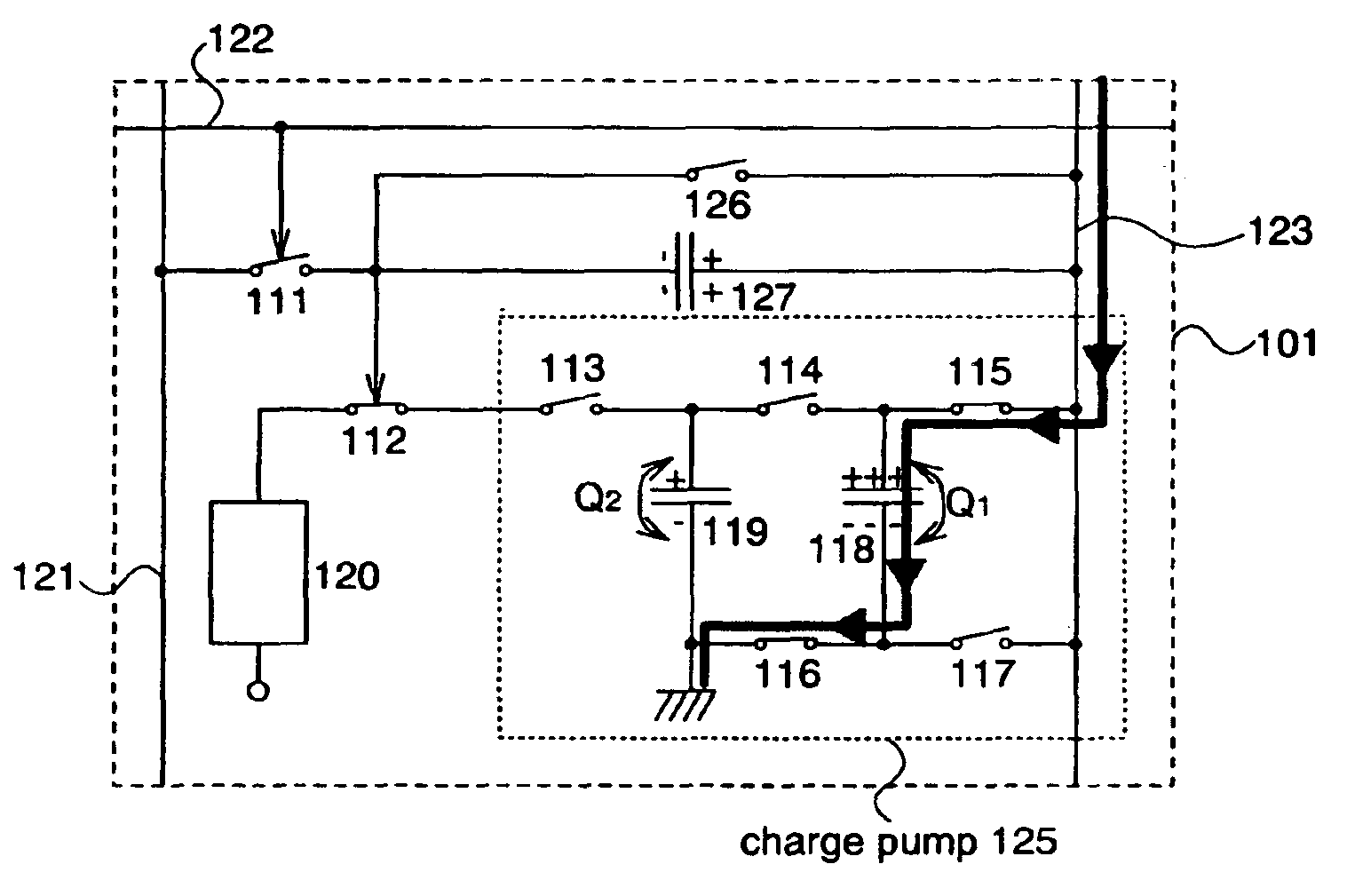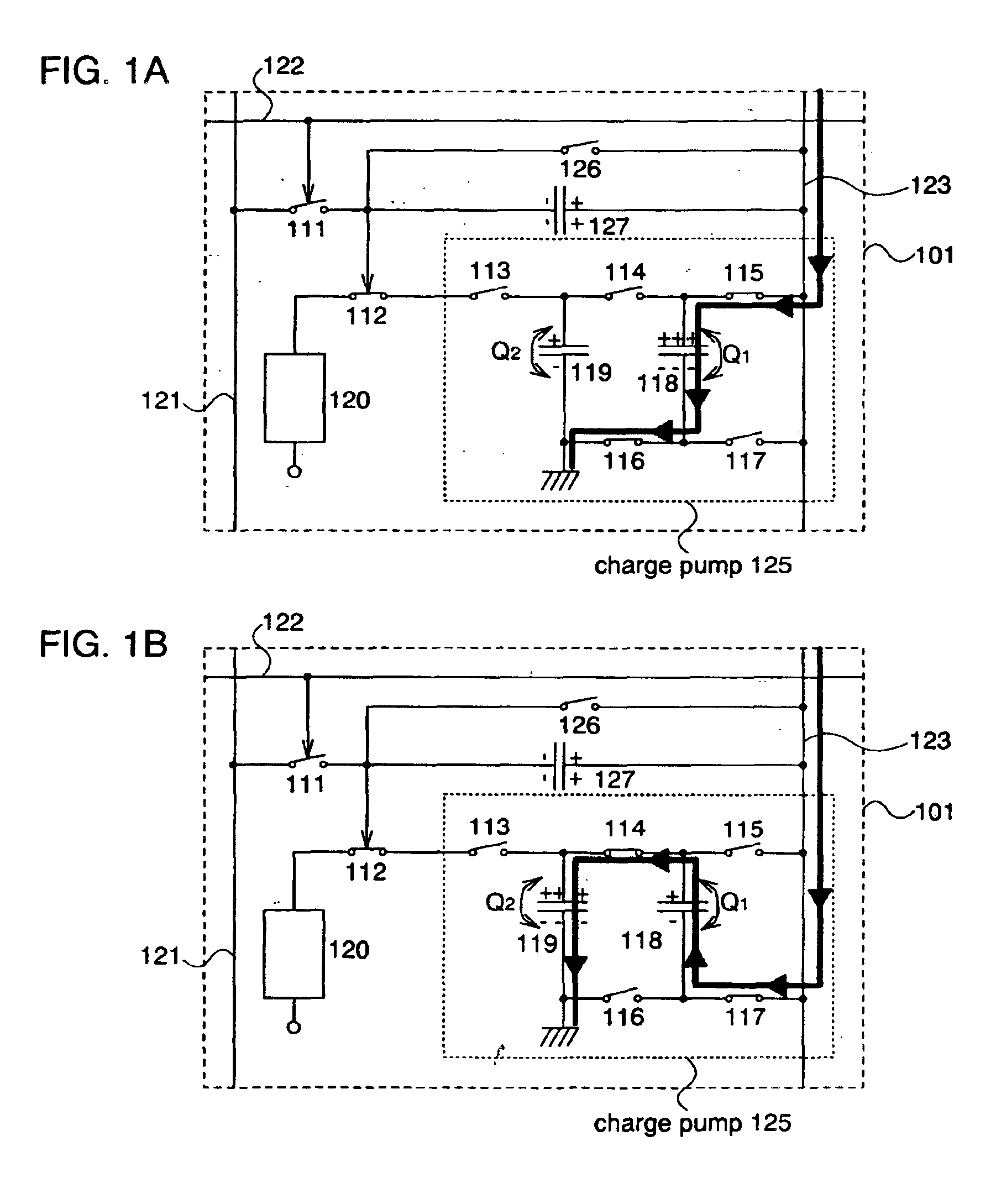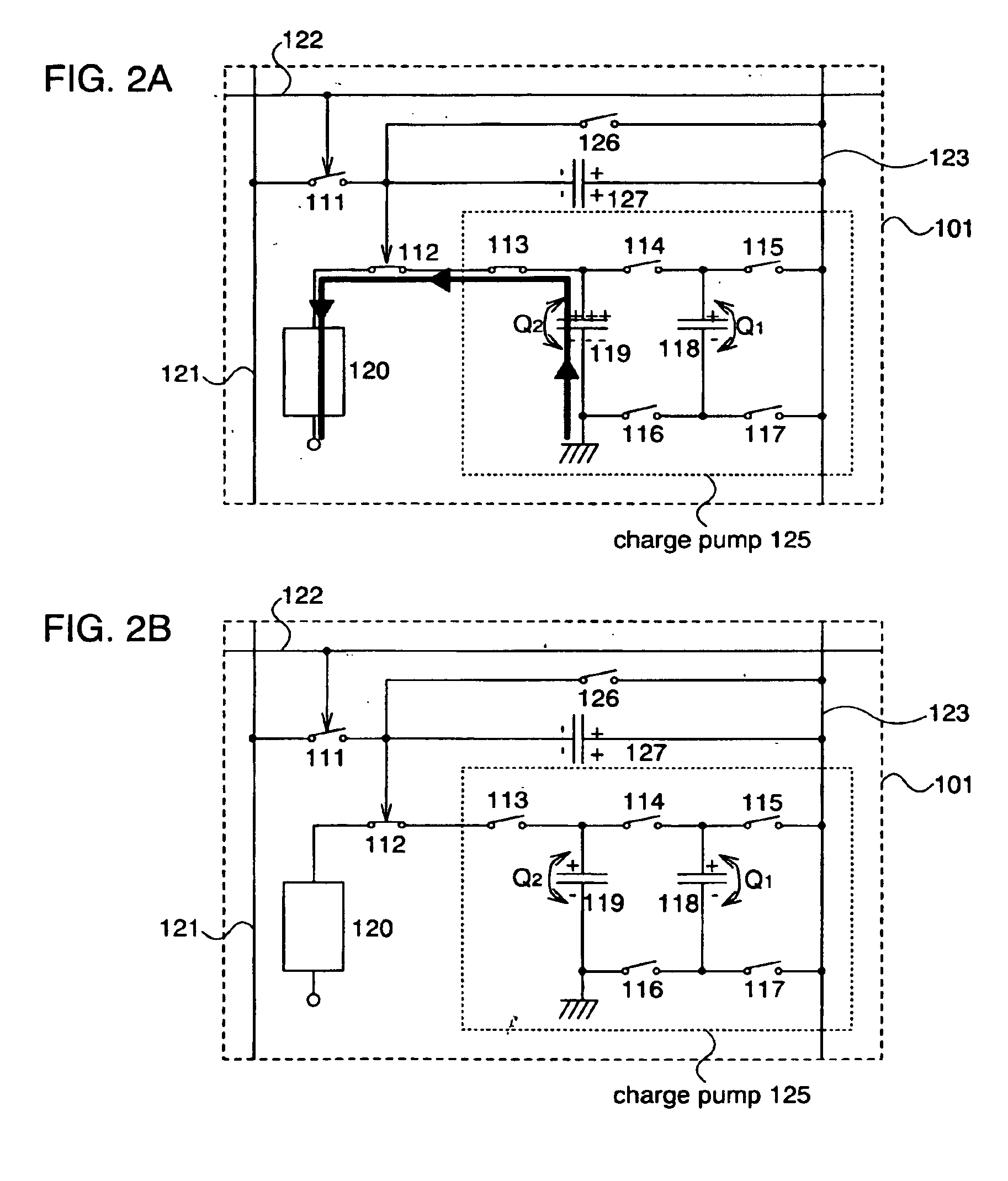Light emitting device
a technology of light emitting devices and light emitting elements, which is applied in the direction of static indicating devices, solid-state devices, instruments, etc., can solve the problems of inability to obtain desirable light emission intensity, variation in the amount of current supplied to the light emitting element, and the effect of suppressing the influence of a variation in the characteristics of the driver transistor
- Summary
- Abstract
- Description
- Claims
- Application Information
AI Technical Summary
Benefits of technology
Problems solved by technology
Method used
Image
Examples
embodiment 1
[Embodiment 1]
In this embodiment, a configuration and an operation of a pixel provided in a light emitting device of the present invention will be described with reference to FIG. 4B.
First, a detailed configuration of a pixel 101 in this embodiment will be described with reference to FIG. 4B. In the pixel 101, reference numerals 111 to 114 and 126 denote switches, 120 denotes a light emitting element, 121 denotes a signal line, 122 denotes a scanning line, 123 denotes a power source line, and 119 and 127 denote capacitor elements.
The switches 111 and 126 are connected in series and the switches 112 to 114 are connected in series with one another. In addition, the capacitor element 119 and the light emitting element 120 are connected in parallel. Note that elements each having a switching function are desirably used for the switches 111 to 114 and 126, preferably, transistors are used therefor. When transistors are used for the switches 111 to 114 and 126, it is necessary to provide ...
embodiment 2
[Embodiment 2]
In this embodiment, a detailed configuration and an operation of a pixel provided in a light emitting device of the present invention will be described with reference to FIGS. 1A, 1B, 2A, and 2B.
First, a detailed configuration of a pixel 101 in this embodiment will be described with reference to FIG. 1A. In the pixel 101, reference numerals 111, 112, and 126 denote switches, 120 denotes a light emitting element, 121 denotes a signal line, 122 denotes a scanning line, 123 denotes a power source line, 125 denotes a charge pump (booster pump), and 127 denotes a capacitor element. The charge pump 125 includes switches 113 to 117 and capacitor elements 118 and 119.
The switches 111 and 126 are connected in series, the switches 112 to 115 are connected in series, and the switches 116 and 117 are connected in series with each one another. In addition, the capacitor elements 118 and 119 are connected in parallel. Note that elements each having a switching function are desirably...
embodiment 3
[Embodiment 3]
In this embodiment, a configuration of a pixel 101 which is different from that in the above-mentioned embodiment will be described with reference to FIGS. 3A, 3B, and 4A.
The pixel 101 shown in FIG. 3A has a configuration in which the switches 116 and 117 are excluded in the pixel 101 shown in FIGS. 1A, 1B, 2A, and 2B. In addition, a clock signal is directly inputted to one electrode of the capacitor element 118. Because the detailed description for the configuration and operation of the pixel 101 shown in FIG. 3A is analogous to the above-mentioned embodiment, the description is omitted here.
According to the configuration of the pixel 101 shown in FIG. 3B, a capacitor element 141 and switches 142 to 144 are added to the pixel 101 shown in FIGS. 1A, 1B, 2A, and 2B, thereby increasing the number of stages in a charge pump 125 by one stage to three stages. In the pixel 101, a charge A flowing into the light emitting element 120 can be indicated by the following equation ...
PUM
 Login to View More
Login to View More Abstract
Description
Claims
Application Information
 Login to View More
Login to View More - R&D
- Intellectual Property
- Life Sciences
- Materials
- Tech Scout
- Unparalleled Data Quality
- Higher Quality Content
- 60% Fewer Hallucinations
Browse by: Latest US Patents, China's latest patents, Technical Efficacy Thesaurus, Application Domain, Technology Topic, Popular Technical Reports.
© 2025 PatSnap. All rights reserved.Legal|Privacy policy|Modern Slavery Act Transparency Statement|Sitemap|About US| Contact US: help@patsnap.com



